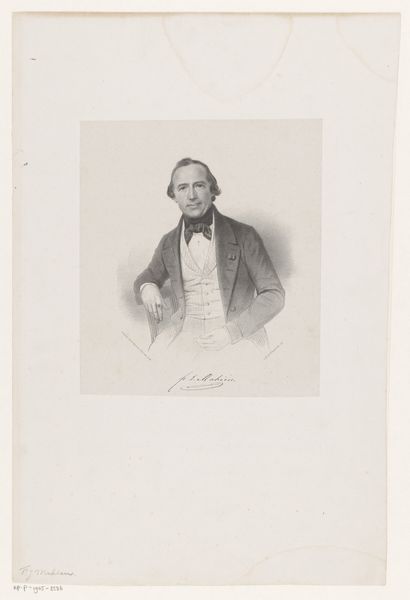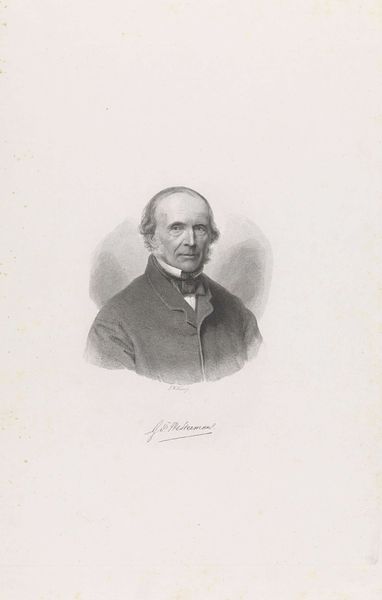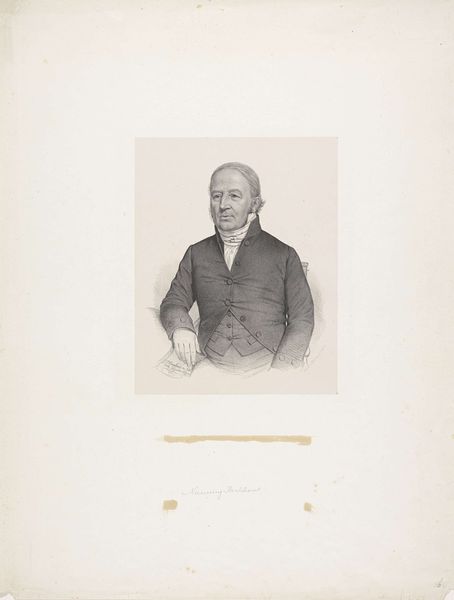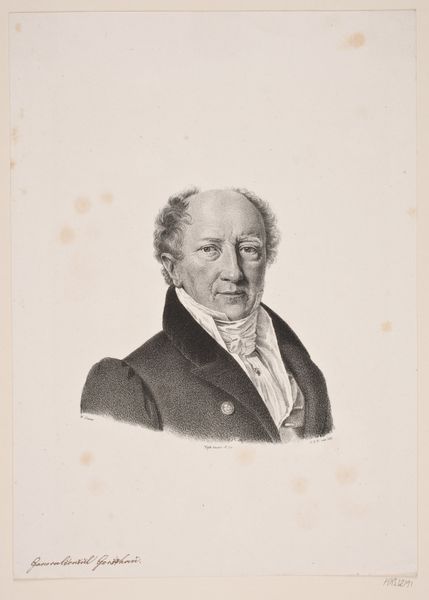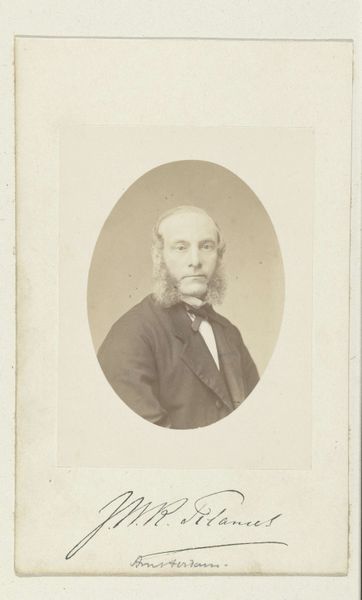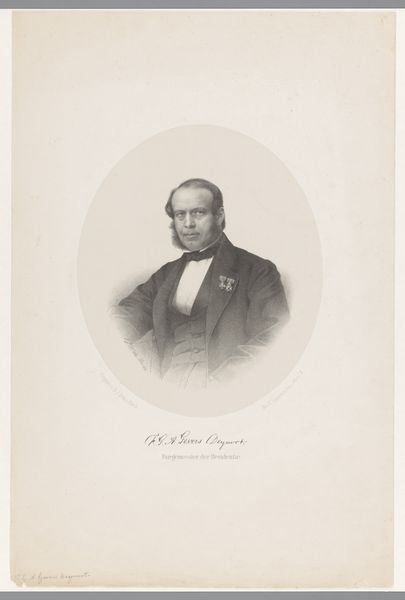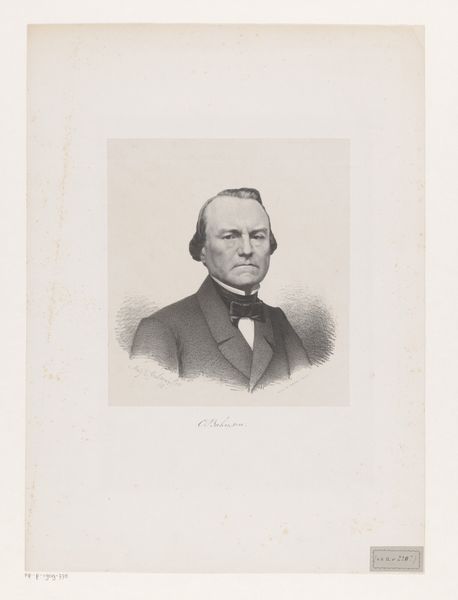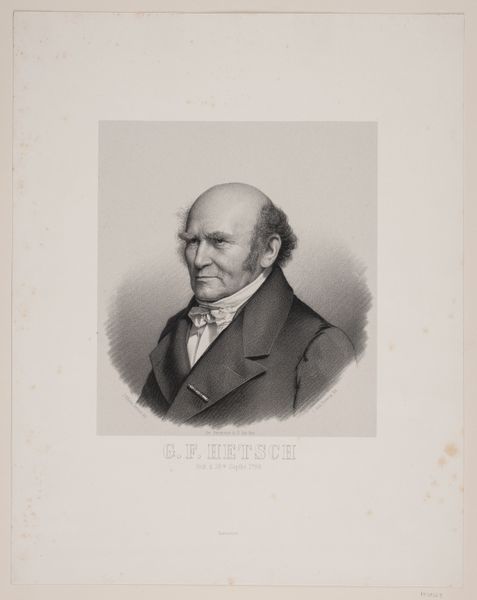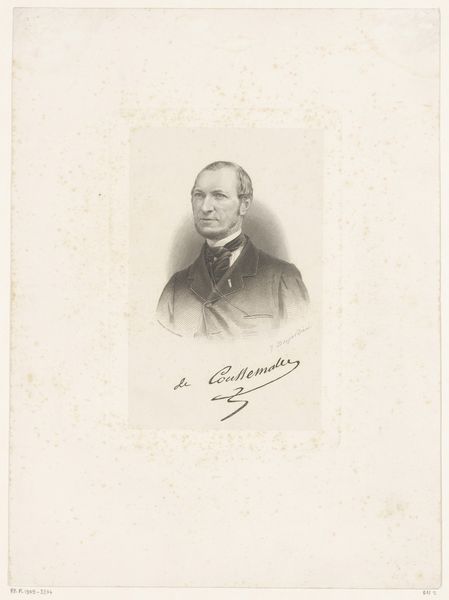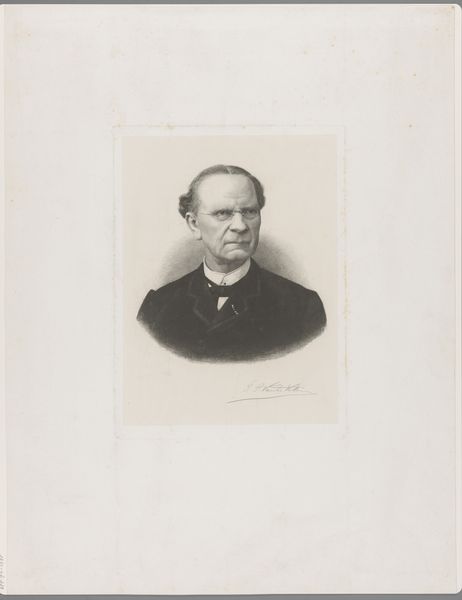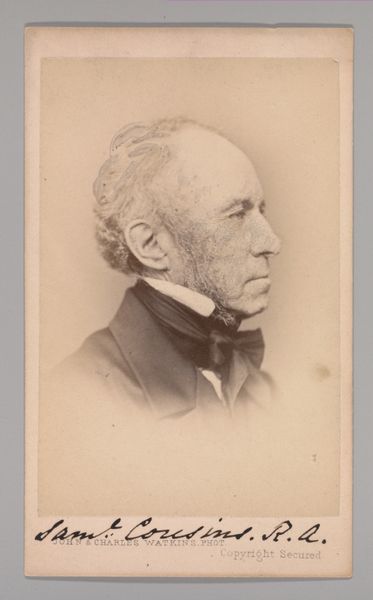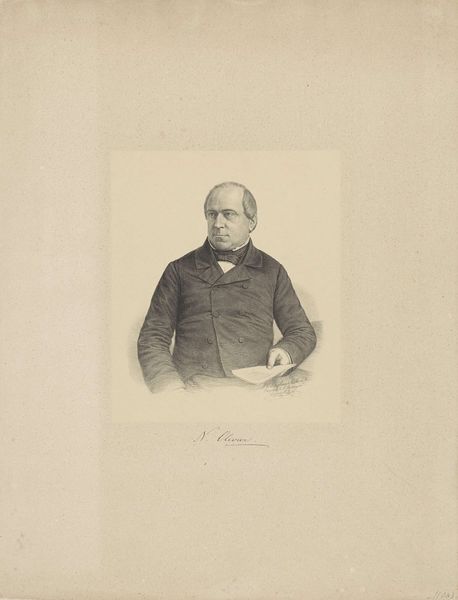
Dimensions: height 140 mm, width 115 mm
Copyright: Rijks Museum: Open Domain
Curator: Here we have an intriguing gelatin-silver print, dating from 1865 to 1875, titled "Portret van William Ewart Gladstone." Editor: The first thing that strikes me is its size and how the grayscale rendering evokes a somber mood. Curator: Absolutely. This photographic portrait of Gladstone is particularly interesting when viewed through the lens of Victorian politics. The image captures a very powerful figure during an era of immense social change, the slow erosion of Empire. This photography came into its own as a key component in the construction of celebrity. How do you see this print playing with such notions? Editor: It's fascinating to consider the means of production. This gelatin-silver process involved a specific alchemy – the coating, exposure, and development. These techniques enabled a wide range of prints to be made fairly quickly. The rise of figures such as Gladstone depended on images circulating widely. It also shows the way labor divisions play a role here. I wonder if he understood the materiality behind how it would be constructed and disseminated, and if that informed his actions. Curator: His gaze definitely conveys an image of power, a calculated and composed persona meant for public consumption and the maintenance of control, while navigating shifting class structures in Britain and abroad. We can examine that more clearly given our present day knowledge of events which defined that era. Editor: True. I am thinking about what these mass produced portraits say about consumption. How does such imagery support existing power structures through sheer repetitive display in newspapers or cartes de visite? Who were these pictures created for? Gladstone was conscious that such photos and their ubiquity contributed towards maintaining and consolidating social power through simple image consumption, particularly among middle and upper classes. Curator: And did such social stratification play any role in informing his politics at that moment? The performative aspect of leadership then, is visually recorded and carefully disseminated to its publics, while, crucially, leaving out large swathes of the population who are deemed irrelevant. Editor: It is precisely this interplay between materials, the technology to use and mass produce these at scale and the socio-political machine driving these trends which highlights some hidden connections within the wider framework. Thank you, as always, for sharing these contextual layers. Curator: It allows for much richer discussions that foreground the lives behind and beyond a carefully staged pose captured on a relatively new medium for that time.
Comments
No comments
Be the first to comment and join the conversation on the ultimate creative platform.
